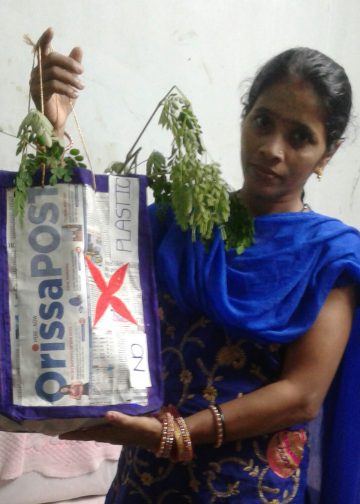Bhawanipatna: The collection and procurement of tamarind in Kalahandi district has taken a hit due to alleged lack of institutional support and incentives from the Tribal Development Cooperative Corporation (TDCC), and the state government. As a result, farmers and collectors have to rely heavily on middlemen and traders which often lead to distress sale of their products, reports stated.
Despite expectations that TDCC would lead efforts to procure tamarind from local gatherers, their limited involvement has left tribal communities dependent on outside traders and middlemen, reports said. These middlemen often exploit the situation, offering much lower than fair prices to marginalised communities, especially tribals who rely on tamarind collection and their sale for livelihood.
Also Read: NHRC seeks ATR from CS on condition of Dongria Kondhs in Odisha
As a result, tribals who are into this practice since generations continue to be fleeced by middlemen and outside traders. TDCC is reportedly offering Rs 3,600 per quintal of tamarind, but in remote and rural areas, setting and maintaining a fair market price per quintal procurement is proving difficult. As a result, some tribals are forced to offload their produce at prices as low as Rs 1,000 per quintal, while others struggle to sell at competitive rates by vending in marketplaces. Currently, market prices for tamarind range between Rs 40 and Rs 50 per kilogram, but TDCC has not procuring the produce this season.
TDCC officials confirmed that not even a single kilogram has been purchased so far this year. Last year, TDCC procured tamarind through local women self-help groups (WSHGs), which collected it directly from gatherers and handed it over to TDCC. In return, these WSHG volunteers received Rs 72 per quintal as commission, while TDCC paid gatherers Rs 3,600 per quintal. In 2024, TDCC reportedly procured 966.74 quintals of tamarind in Kalahandi, disbursing Rs 34,80,264 in payments.
Demand for tamarind remains particularly high in blocks such as Lanjigarh, Thuamul Rampur and Madanpur Rampur. However, without access to proper pricing and support mechanisms, forest dwellers collecting tamarind are often forced to sell their collection to middlemen and traders at reduced rates, missing out on their rightful earnings. Except for Lanjigarh, Madanpur Rampur, Thuamul Rampur, Bhawanipatna, and Kalampur, the TDCC has made no efforts to collect tamarind from other blocks in Kalahandi district, according to local residents.
Although tamarind collection is also carried out in Kokasara, the TDCC has largely ignored these operations, they alleged. Last year, middlemen allegedly purchased tamarind at rates as low as Rs 15 per kilogram and Rs 800 per 50-kg sack, raising concerns about exploitation. While 32 WSHGs are active in five blocks under the TDCC last year, it has shown little interest this season. It is estimated that up to 10,000 quintals of tamarind would be collected from the district this year.
However, a lack of cold storage facilities has led to the produce being transported to the facilities in Sambalpur for preservation. Tamarind is being sold in online marketplaces. Observers believe that if cold storage facilities were developed locally and more beneficiaries were linked to the TDCC, it could significantly boost income for tribal communities.
PNN






































